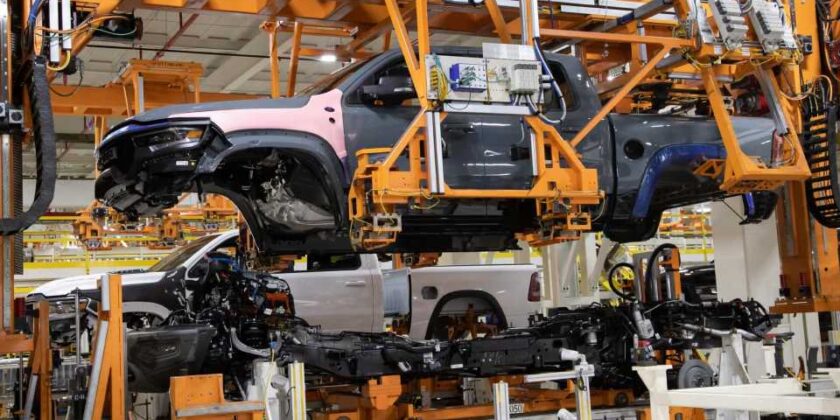Update: Added official statement from Stellantis regarding the strike.
The UAW strike against Detroit automakers has reached 6,800 workers at the Stellantis factory in Sterling Heights, Michigan. Employees at the facility walked off the line Monday morning, bringing Ram 1500 production at the sprawling 286-acre assembly plant to a halt. According to the UAW, the Sterling Heights Assembly Plant is the largest and most profitable facility for Stellantis.
The union points to Stellantis having the worst proposal among its competitors as the reason for the walkout, claiming the company “lags behind both Ford and General Motors in addressing the demands of their UAW workforce.” The union further states this strike was unannounced, suggesting company officials didn’t know it was coming. Stellantis had already canceled planned appearances at SEMA, the LA Auto Show, and CES prior to this new strike.
Gallery: 2022 Ram 1500 TRX
In a statement, a Stellantis spokesperson expressed considerable displeasure at the latest strike.
“We are outraged that the UAW has chosen to expand its strike action against Stellantis. Last Thursday morning, Stellantis presented a new, improved offer to the UAW, including 23 percent wage increases over the life of the contract, nearly a 50 percent increase in our contributions to the retirement savings plan, and additional job security protections for our employees. Following multiple conversations that appeared to be productive, we left the bargaining table expecting a counter-proposal, but have been waiting for one ever since.
Our very strong offer would address member demands and provide immediate financial gains for our employees. Instead, the UAW has decided to cause further harm to the entire automotive industry as well as our local, state, and national economies.
The UAW’s continued disturbing strategy of “wounding” all the Detroit 3 will have long-lasting consequences. With every decision to strike, the UAW sacrifices domestic market share to non-union competition. These actions not only decrease our market share, but also impact our profitability and therefore, our ability to compete, invest and preserve the record profit sharing payments our employees have enjoyed over the past two years.
The latest strike elevates the total number of UAW members on picket lines to over 40,000. It comes after UAW President Shawn Fain announced no new strikes in his weekly address last Friday, though Fain previously said new strikes could happen at any time. The precursor to this surprise strike happened on October 12, when 8,700 union workers walked off the job at Ford’s F-Series factory in Kentucky without warning. The move prompted Ford to issue a statement calling the UAW’s decision “grossly irresponsible.”
Now in its sixth week, the historic UAW strike marks the first time the union has called for simultaneous walkouts against Detroit’s big three. The strike began on September 15 with workers at three plants – one for each automaker – hitting picket lines. That number is now up to seven plants and 38 parts distribution centers, spread across 22 states.
With regard to wages, Automotive News reports Ford, General Motors, and Stellantis as offering a 23-percent wage increase, with Stellantis showing a wage grow-in period of four years versus three for the others. As for temporary workers, Ford and GM show a starting wage of $21 per hour. Ford’s proposal sees temps converted to full-time after 90 days, with GM converting to full-time in one year. Stellantis proposes a $20 per hour wage with no mention of converting temps to full-time.
Source: Read Full Article

